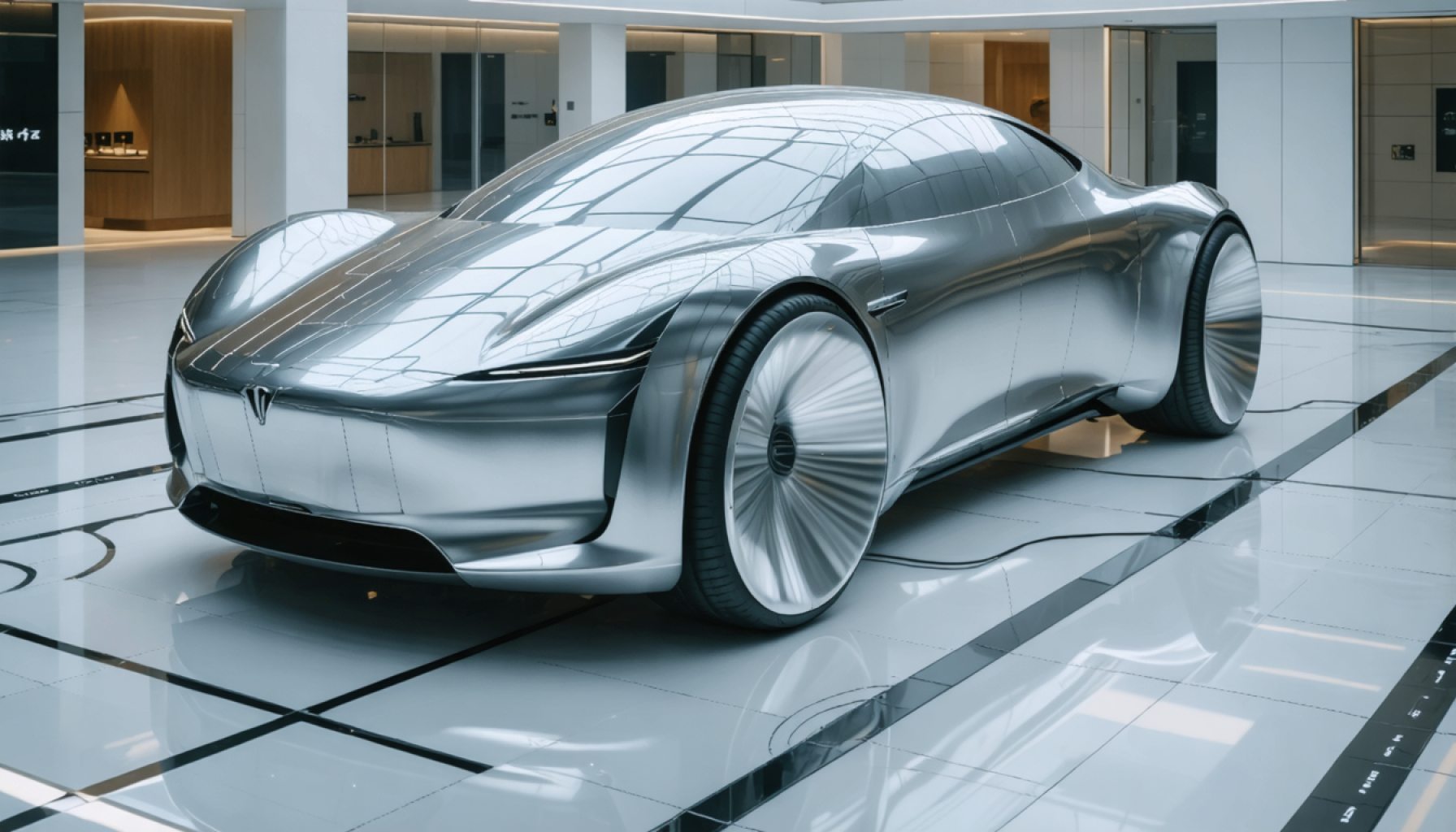- Aluminum-air batteries are emerging as a promising solution for sustainable transportation due to their efficiency and environmental friendliness.
- These batteries use an electrochemical reaction between aluminum and oxygen to produce energy, offering high energy density and lighter weight.
- Challenges such as recharging and technology refinements need to be addressed to enhance their competitiveness against lithium-ion batteries.
- Innovations in electrolyte compositions and adaptive battery designs are paving the way for wider adoption.
- Aluminum-air batteries have the potential to reduce range anxiety and ecological concerns associated with current battery technologies.
- Government incentives and a global push for cleaner energy accelerate the development of aluminum-air technology.
- These batteries could potentially dominate the market, becoming a mainstream choice for electric vehicles.
A quiet revolution is humming beneath the hood of the latest wave of electric vehicles, promising to reshape the landscape of sustainable transportation. Aluminum-air batteries, with their compelling blend of efficiency and environmental friendliness, are emerging as a frontrunner in the race to power the cars of tomorrow. Unlike their lithium-ion cousins, these batteries rely on the abundant and recyclable nature of aluminum, combined with the simple, inexhaustible element of air, to store and deliver energy.
Consider the mechanics: At the core, aluminum-air batteries generate electricity through a fascinating electrochemical reaction where aluminum reacts with oxygen. This process yields a significant energy density, suggesting a greater driving range and lighter battery weight—two pivotal factors in overcoming “range anxiety” and boosting EV performance. Imagine the possibilities—a battery that not only propels a car further per charge but also slices through some of the ecological concerns tarnishing lithium-ion’s image.
While the path for aluminum-air batteries isn’t devoid of obstacles, the rewards are enticing enough to warrant attention. Recharging challenges and technology refinements must be tackled to elevate their competitive stance against established battery systems. Yet, as researchers innovate with breakthrough electrolyte compositions and adaptive battery designs, each step forward brings these batteries closer to the consumer market.
In a world increasingly conscious of its carbon footprint, the appeal of aluminum-air technology resonates well beyond the enthusiast’s garage. As nations accelerate towards cleaner energy standards, substantial investments in eco-friendly innovations are crafting a fertile ground for these batteries to take root. The allure of a cheaper, cleaner, and more energy-dense battery has caught the eye of automotive manufacturers eager to sidestep the supply chain hurdles posed by lithium mining.
Market trends are painting a picture where aluminum-air batteries could not only coexist with but eventually eclipse other batteries in terms of both market share and technological favor. Governments worldwide, eager to ride the wave of renewable energy, are rolling out policies and incentives aimed at fast-tracking the development and adoption of cleaner technologies in transportation.
The future is promising. As this technology edges closer to practicality, manufacturers are sizing up the benefits of scalable, large-scale production. The landscape is ripe for aluminum-air batteries to make a notable mark, driving a future where electric vehicles are not just a luxury or a statement, but a mainstream, viable choice for all. This transformative potential signals that in the race towards innovation in energy storage, aluminum-air may just catalyze the next big leap.
Aluminum-Air Batteries: The Game-Changer in Electric Vehicles
Unveiling the Potential of Aluminum-Air Batteries
Aluminum-air batteries are making waves in the electric vehicle (EV) industry with their impressive energy density, lightweight design, and environmental benefits. Leveraging the reaction between aluminum and oxygen, these batteries offer a promising alternative to conventional lithium-ion solutions, potentially revolutionizing sustainable transportation.
Key Features and Benefits
1. Energy Density and Range: Aluminum-air batteries boast a significantly higher energy density compared to lithium-ion batteries. This translates to extended driving ranges, addressing the prevalent “range anxiety” associated with EVs.
2. Lightweight Design: The lighter weight of aluminum-air systems can enhance EV efficiency, potentially reducing the vehicle’s overall weight and improving performance metrics such as acceleration and handling.
3. Environmental Impact: With aluminum being abundant and recyclable, these batteries offer a more sustainable option. They mitigate ecological issues linked to lithium mining and promise reduced environmental footprints.
Challenges and Limitations
– Recharging Obstacles: Unlike lithium-ion batteries, aluminum-air variants face challenges in recharging. Typically, they require a battery swap or replacement rather than traditional charging, necessitating infrastructure adjustments.
– Tech Refinements: Continuous innovation is crucial to overcome challenges like electrolyte stability and battery lifespan. Developing reliable, adaptive battery designs remains a priority for researchers.
Market Forecasts and Industry Trends
– Industry Acceptance: Automotive giants are eyeing aluminum-air technology to diversify their EV offerings and minimize reliance on lithium-based supply chains, which can be complex and politically sensitive.
– Policy Drivers: Global governments are championing clean energy initiatives, implementing incentives and regulations to accelerate the shift towards sustainable transportation technologies.
Expert Insights and Predictions
As aluminum-air technology advances, significant investments in research and partnerships may yield commercial-ready solutions within the next decade. This technological leap could position aluminum-air batteries not just as an alternative but as a potential successor in certain EV market segments.
Quick Tips for Embracing Aluminum-Air Technology
1. Stay Informed: Follow developments in battery tech, particularly research papers and industry announcements about aluminum-air advancements.
2. Evaluate Costs: Consider the long-term cost-effectiveness and availability of support infrastructure before adopting any new EV technology.
3. Monitor Policy Changes: Keep an eye on governmental policies that could impact the EV landscape, such as subsidies or infrastructure investments aimed at supporting new technologies.
By understanding the opportunities and challenges presented by aluminum-air batteries, stakeholders can better prepare for a future where these innovations could become mainstream.
For more insights into sustainable innovations and emerging technologies, explore resources from the United Nations.
